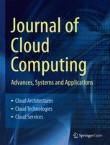Journal of Cloud Computing welcomes submissions to the thematic series on 'NoSQL: Databases for Cloud ( Storage and computation management of big data)'.
Even though the history of NoSQL dates back to 1998 [Carlo Strozzi], the NoSQL movement gained momentum with the exponential popularity of Cloud Computing (the term Cloud Computing was introduced in 2006). The term NoSQL was reintroduced 2009.
NoSQL databases are available as commercial as well as open source database management software from various IT vendors. Some of the NoSQL databases support SQL (Structured Query language) or SQL-like query language, hence to avoid the misunderstanding that NoSQL is “No to SQL”, NoSQL is defined as "Not Only SQL". There is no specific definition for NoSQL since NoSQL is basically an accidental term. NoSQL databases are capable of handling large amounts of structured, unstructured, semi-structured and hybrid data with an amazing performance at reduced complexity and cost.
NoSQL databases are specifically designed for low cost commodity hardware. These databases are mostly used for storage and access of data across multiple storage cluster. For example Google, Facebook, Google+, Google big table, Amazon Dynamo, Twitter etc. collects and stores Terabytes of data for their user every day. NoSQL databases are found suitable for such type of application since it is possible to Scale Up/Scale out the NoSQL databases simply by distributing the database over several hosts or nodes as the load increases. Further NoSQL databases are also finding significance in the huge data storage requirements of Bigdata, Real time applications and Cloud based applications.
Potential topics include but are not limited to:
- Recent Technology, Algorithm for NoSQL
- NoSQL and Cloud paradigm (Characteristics and Classification, Data storage Technology, Algorithms)
- Comparison and classification of In-Memory, In-Database and Hybrid NoSQL databases for Bigdata storage
- Comparative study on mostly used NoSQL [BASE, ACID & W(rite), R(ead), N(ode) analysis]
- Hadoop Ecosystem Tools & Algorithms
- Various NoSQL Bigdata analytics Tools/Technology/Applications
- Challenges and Security issues of NoSQL databases
- Data Migration Technique/Algorithm/Platform/Tools for SQL to NoSQL Databases and vice versa
- NoSQL Middleware, Load balancing in Distributed databases
- Distributed Transaction processing
- NoSQL, Distributed Database Benchmarking
- Research trends in NoSQL/Cloud Database, Polyglot persistence
Submission Instructions
Before submitting your manuscript, please ensure you have carefully read the submission guidelines for Journal of Cloud Computing. The complete manuscript should be submitted through the Journal of Cloud Computing submission system. To ensure that you submit to the correct thematic series please select the appropriate thematic series in the drop-down menu upon submission. In addition, indicate within your cover letter that you wish your manuscript to be considered as part of the thematic series on 'NoSQL: Databases for Cloud (Storage and computation management of big data)'. All submissions will undergo rigorous peer review and accepted articles will be published within the journal as a collection.
Deadline for submissions:
24 October, 2016
Lead Guest Editor
Ganesha Chandra Deka, Directorate General of Training,Ministry of Skill Development & Entrepreneurship, Government of India, India
Submissions will also benefit from the usual advantages of open access publication:
- Rapid publication: Online submission, electronic peer review and production make the process of publishing your article simple and efficient
- High visibility and international readership in your field: Open access publication ensures high visibility and maximum exposure for your work - anyone with online access can read your article
- No space constraints: Publishing online means unlimited space for figures, extensive data and video footage
- Authors retain copyright, licensing the article under a Creative Commons license: articles can be freely redistributed and reused as long as the article is correctly attributed
For editorial enquiries please contact editorial@cloud-casa.com
Sign up for article alerts and news from this journal
to keep updated on articles published in Journal of Cloud Computing - including articles published in this thematic series!
